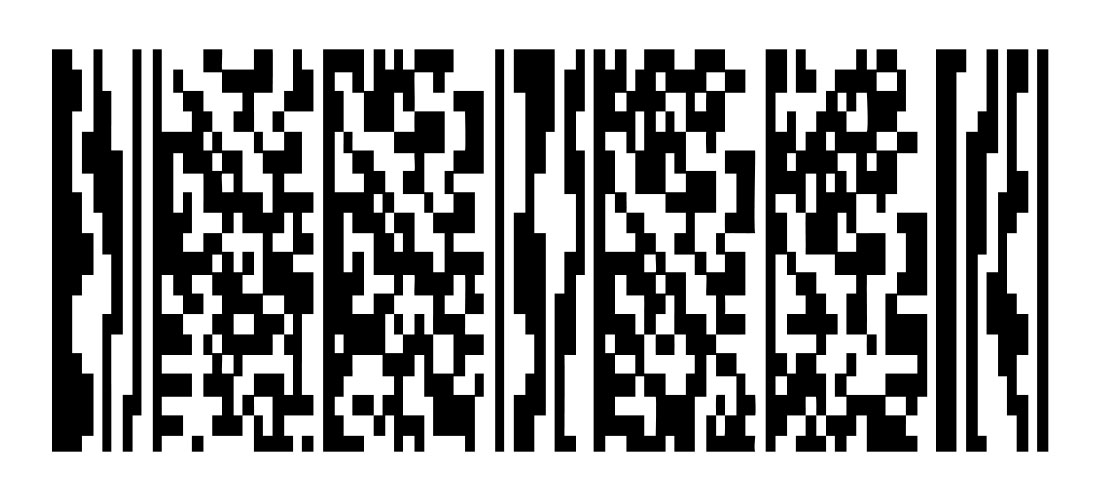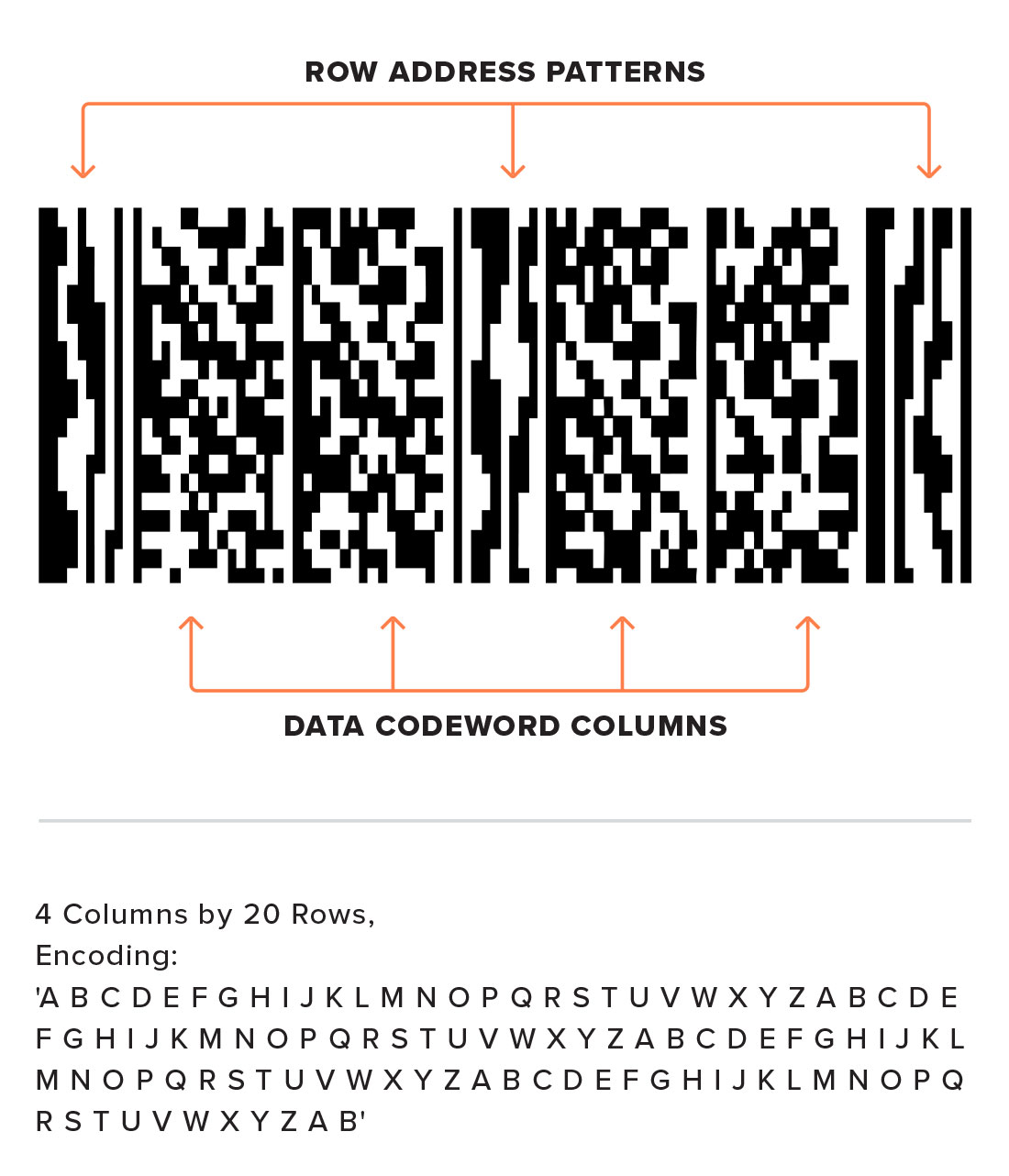MicroPDF417 Barcodes
MicroPDF417 Barcodes
The MicroPDF417 barcode is similar to the PDF417 format in that both derive their name from the “portable file format” and contain 4 bars and 4 spaces arranged within every 17 module codeword. It’s worth noting, however, that unlike MacroPDF417 and CompactPDF417 — which are considered special types of PDF417 — MicroPDF417 leverages a different symbology.
The original PDF417 format was created by Symbol Technologies in 1991; in 2006, ISO/IEC added its 24728:2006 specification for MicroPDF417 barcodes. This 2D barcode is designed to encode a moderate amount of information in a small space, allowing companies to reduce symbol size without sacrificing accuracy.
While PDF417 and MicroPDF417 share the same approach to encodation, error correction and allow the same symbol characters, MicroPDF417 uses a unique set of 10-module-wide Row Access Patterns instead of PDF417’s 17-module-wide start/stop patterns and left/right row indicators. This allows barcode designers to significantly reduce the symbol width of MicroPDF417 barcode and also decrease its overall size. While this improves total data efficiency, it also lowers total data capacity.

Format
Every MicroPDF417 symbol contains 4 – 44 rows and 1 – 4 columns, but only specific combinations of rows and columns are permitted:
- 1 column — 11, 14, 17, 20, 24, or 28 rows
- 2 columns — 8, 11, 14, 17, 20, 23, or 26 rows
- 3 columns — 6, 8, 10, 12, 15, 20, 26, 32, 38, or 44 rows
- 4 columns — 4, 6, 8, 10, 12, 15, 20, 26, 32, 38, or 44 rows
The MicroPDF417 format supports up to 250 text characters, 150 binary characters or 366 numeric characters when the data contained in the barcode is only numerical. It also permits the encoding of all printable ASCII characters 32 – 126 along with 9, 10, and 13. This format also includes character self-checking and is bi-directionally decodable.

Common Use Cases
This barcode type is used for composite codes in the GS1 DataBar family. Because of its ability to encode significant amounts of information across a very small space, it’s often used in food industry applications where packaging space is at a premium and codes must be quickly and easily read by hand-scanners to track origin, processing, and shipping information.